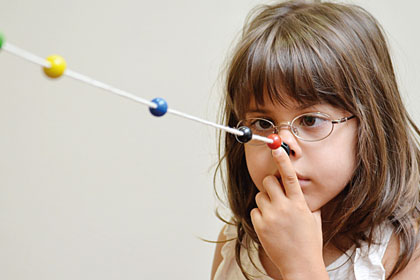
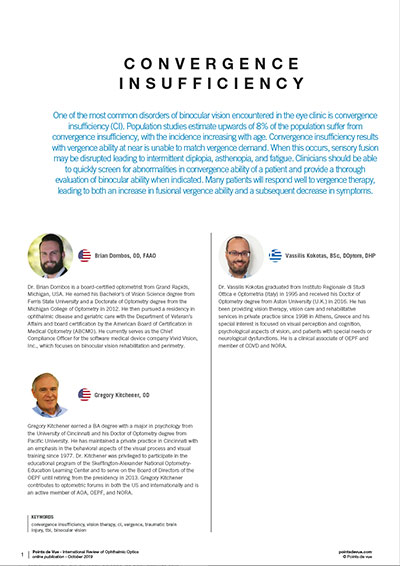 Click here to read the article
Click here to read the article
One of the most common disorders of binocular vision encountered in the eye clinic is convergence insufficiency (CI). Population studies estimate upwards of 8% of the population suffer from convergence insufficiency, with the incidence increasing with age. Convergence insufficiency results with vergence ability at near is unable to match vergence demand. When this occurs, sensory fusion may be disrupted leading to intermittent diplopia, asthenopia, and fatigue. Clinicians should be able to quickly screen for abnormalities in convergence ability of a patient and provide a thorough evaluation of binocular ability when indicated. Many patients will respond well to vergence therapy, leading to both an increase in fusional vergence ability and a subsequent decrease in symptoms.
Article from the magazine "Point de vue"

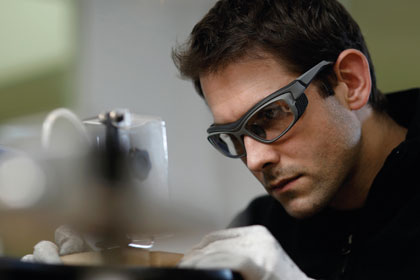
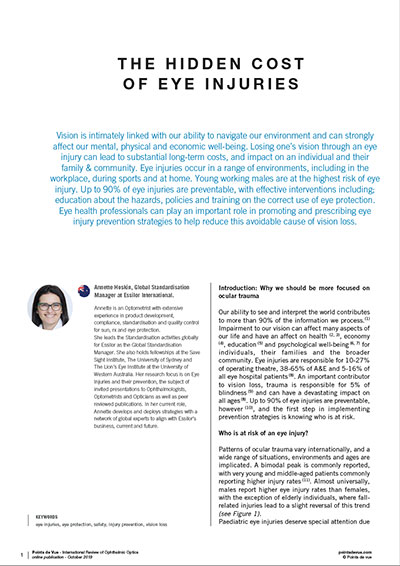 Click here to read the article
Click here to read the article
Vision is intimately linked with our ability to navigate our environment and can strongly affect our mental, physical and economic well-being.
Losing one’s vision through an eye injury can lead to substantial long-term costs, and impact on an individual and their family & community. Eye injuries occur in a range of environments, including in the workplace, during sports and at home. Young working males are at the highest risk of eye injury. Up to 90% of eye injuries are preventable, with effective interventions including; education about the hazards, policies and training on the correct use of eye protection. Eye health professionals can play an important role in promoting and prescribing eye injury prevention strategies to help reduce this avoidable cause of vision loss.
Article from the magazine "Point de vue"

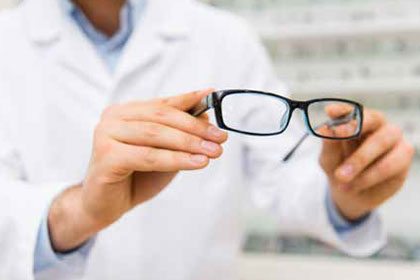
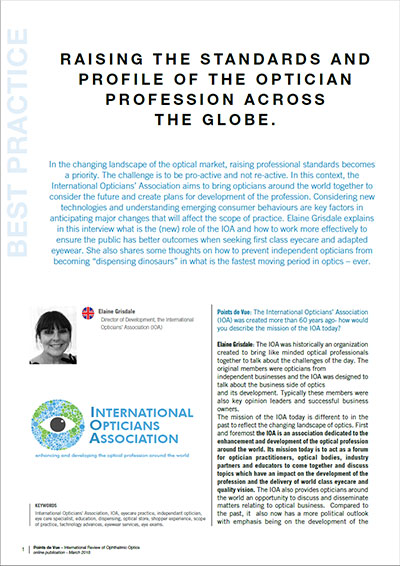 Click here to read the article
Click here to read the article
In the changing landscape of the optical market, raising professional standards becomes a priority. The challenge is to be pro-active and not re-active. In this context, the International Opticians’ Association aims to bring opticians around the world together to consider the future and create plans for development of the profession. Considering new technologies and understanding emerging consumer behaviours are key factors in anticipating major changes that will affect the scope of practice. Elaine Grisdale explains in this interview what is the (new) role of the IOA and how to work more effectively to ensure the public has better outcomes when seeking first class eyecare and adapted eyewear. She also shares some thoughts on how to prevent independent opticians from becoming “dispensing dinosaurs” in what is the fastest moving period in optics – ever.
Article from the magazine "Point de vue"


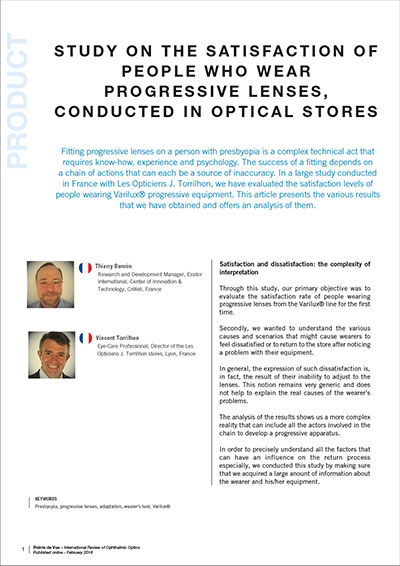 Click here to read the article
Click here to read the article
Fitting progressive lenses on a person with presbyopia is a complex technical act that requires know-how, experience and psychology. The success of a fitting depends on a chain of actions that can each be a source of inaccuracy. In a large study conducted in France with Les Opticiens J. Torrilhon, we have evaluated the satisfaction levels of people wearing Varilux® progressive equipment. This article presents the various results that we have obtained and offers an analysis of them.
Article from the magazine "Point de vue"


